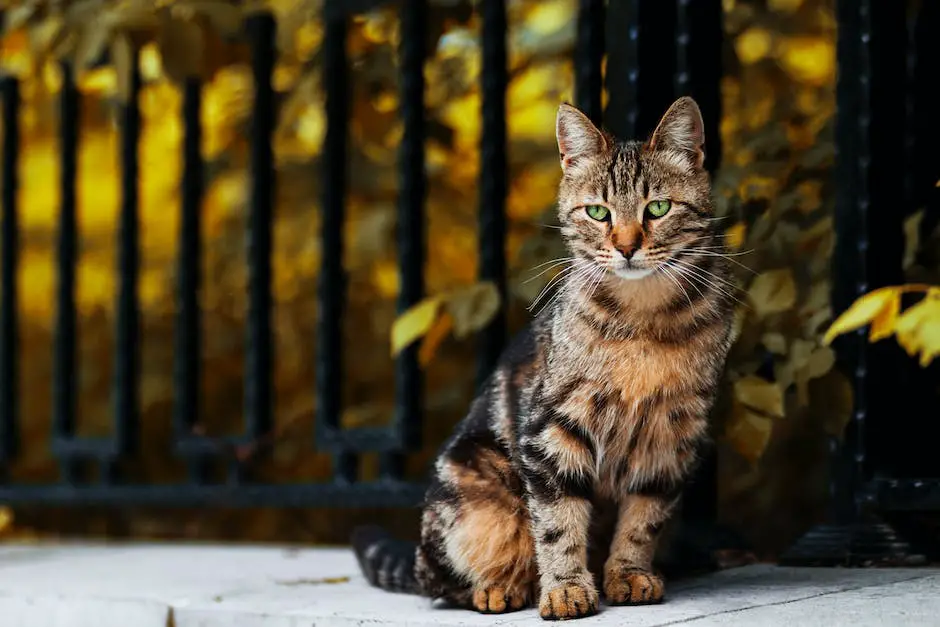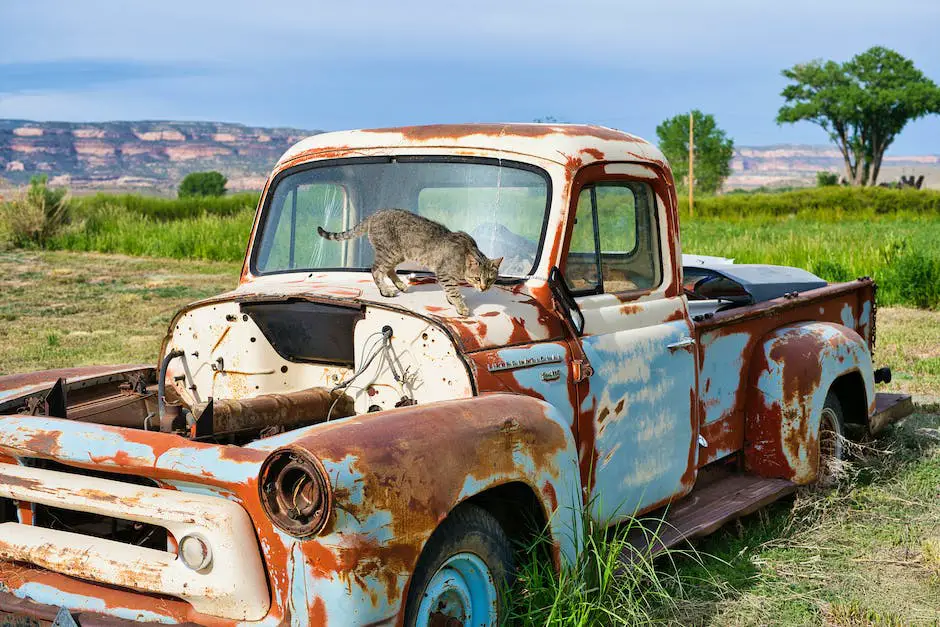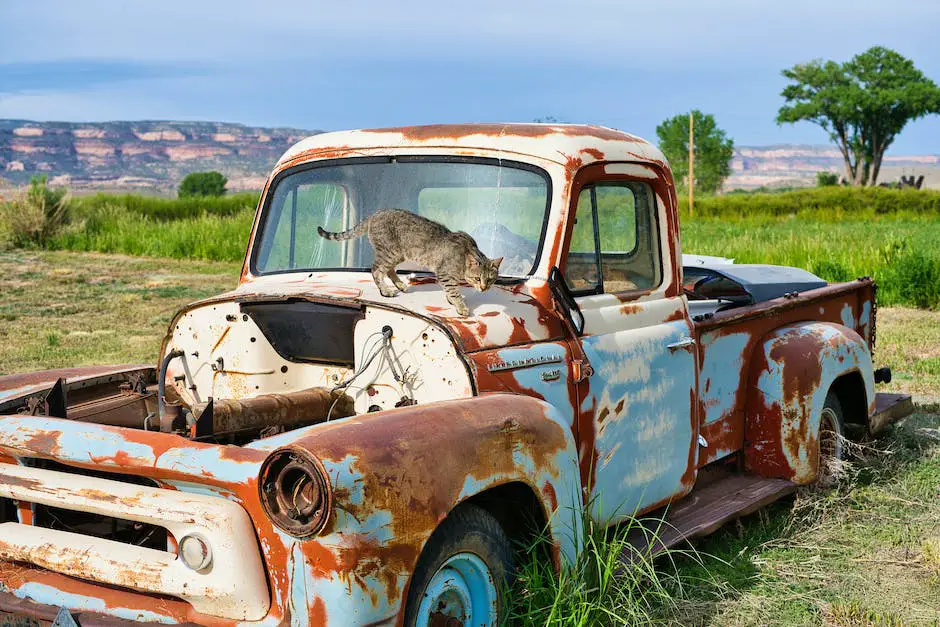When your cat is in heat, there are a few things you can do to help make them more comfortable. Some owners choose to give their cat extra attention and affection during this time. Others find that playing calming music or placing a blanket over their kennel helps to ease their kitty’s nerves. Regardless of how you choose to help your furry friend, the most important thing is to be patient and understanding.
There are a few things you can do to help your cat when they are in heat:
1. Make sure they have access to a litter box so they can relieve themselves.
2. Provide them with a scratch post or other object to scratch on to help relieve any itching or discomfort.
3. Keep them indoor to prevent them from getting pregnant.
4. Speak to your veterinarian about possible medical options to help relieve your cat’s symptoms.
Do I need to do anything if my cat is in heat?
If your cat is going through estrus (heat), you may notice that she is more agitated than usual. She may be meowing more, pacing around, or even acting out. While it’s normal for cats to experience some stress during estrus, there are ways to help ease their anxiety.
One way to help your cat feel more relaxed is by giving her extra attention. This can include petting her, playing with her, or simply spending more time with her. You may also want to give her a special treat, like her favorite toy or food.
If your cat is still feeling stressed, there are other options to consider. You can talk to your veterinarian about medication or supplements that may help ease your cat’s anxiety. You may also want to consider changing her diet or environment to help reduce her stress levels.
A heat generally lasts several days, with the average length being seven days. However, it can range from 1 to 21 days. If the queen (an intact female cat) is not mated during estrus, she will go out of heat for a short period of time, usually about seven days. However, it can range from 2 to 19 days.
Is it painful for a cat to be in heat
Cats do not feel pain when in heat, although they may feel some slight discomfort and agitation. The howling noise a cat makes while in the heat cycle is not done out of pain but rather to attract a potential suitor. On top of being more vocal than normal, a cat in heat may be more affectionate too.
If your cat is yowling, it’s likely due to changes in her hormones. The only solution is to get her spayed, which will stop her from experiencing any heat-related symptoms, and potentially keep her healthier.
What are the stages of a cat in heat?
The estrous heat cycle or reproductive cycle of cats has four distinct stages: anestrous, proestrus, estrus and metestrus.
Anestrous is the stage when the cat is not in heat. Proestrus is the stage when the cat starts to show signs of heat, such as increased vocalization, restlessness and swelling of the genital area. Estrus is the stage when the cat is in full heat, and is receptive to mating. Metestrus is the stage after heat, when the cat’s body starts to prepare for possible pregnancy.
If your cat is suddenly more affectionate than usual, is rubbing and rolling on the floor, is yowling as if in pain, or has raised hindquarters, they may be in heat.
How many times a year is a cat in heat?
A female cat that is un-spayed will usually be in heat every 2-3 weeks throughout the season, unless she successfully mates and becomes pregnant. Cats enter heat several times a year with a typical cycle lasting 4-6 days at a time.
It’s important to remember that your cat’s personality shouldn’t change much after she’s had spaying surgery. She may seem more reserved than before, but that’s likely due to the lack of hormone fluctuations that come with heat cycles.
How often do cats go into heat after the first time
A female cat will go into heat every 2 to 3 weeks unless they are spayed. A cat will typically start going into heat when they’re 4 to 5 months old. Heat cycles usually last about 18 days.
Hi,
It’s important to keep your cat hydrated, especially during the hot summer months. Make sure she has plenty of fresh water to drink and keep an eye on her water intake. You might also want to give her a little extra TLC and attention, including petting and brushing.
If your cat is feeling stressed or anxious, you can try using a feline pheromone diffuser in your home. Spraying these synthetic cat pheromones can help calm your feline and make her feel more comfortable.
How long do cats cry in heat?
If your female cat isn’t spayed and she’s meowing excessively, she may be in heat. Female cats in heat may become more affectionate, rub against you more, purr, and meow a lot. This can last four to ten days. Spaying your cat can help reduce or eliminate excessive meowing due to heat.
Please note that cats may bleed when they are in heat, although this is relatively uncommon. If you do notice any blood in your cat’s urine or around the genital area, it is important to contact your vet right away, as this could be a sign of a urinary tract infection.
What triggers cat heat
Free-roaming cats typically go into heat in the springtime, when the days are getting longer and there is more sunlight. This is due to the fact that their hormonal cycles are triggered by sunlight. female cats will begin their cycles of heat in near February as the days get longer, but will be less likely to go into heat when the days become shorter and darker in the fall.
Female cats reach sexual maturity around 4 months old and can breed during this time. They will then come into heat (or season) every year around February to October. Female cats have many short periods, roughly 2-3 weeks apart, during which they do not ovulate until they are mated. This period of heat cycles can be lengthy.
When should female cats be spayed?
The decision of when to spay or neuter your cat is a personal one. Some cat owners elect to do so when the kitten is young, between six to eight weeks of age. However, the standard spay and neuter surgeries are most often performed when the kitten is between five and six months old. There are benefits and risks to both options and it is important to consult with your veterinarian to make the best decision for your kitten.
A spay or neuter surgery is a routine procedure that helps to control the populations of feral animals. The surgery itself is relatively quick and straightforward, and most animals recover without any complications. While it is true that some animals may feel some discomfort after the surgery, this is typically mild and can be easily managed with pain medication. Overall, the benefits of spaying or neutering far outweigh any potential risks or side effects.
How long do you have to keep a cone on a cat after being spayed
Following topic: 10-14 daysThe cone should stay on until the site is fully healed, and/or the sutures are removed Most sutures and staples are left in for 10-14 days Other lesions may take less or more time than that to heal completely. is extremely helpful. This gives a general guideline for cone removal after dog surgeries. Other lesions may take less time to heal, but 10-14 days is a safe amount of time for the cone to stay on.
Trap-Neuter-Return is the most effective and humane method of stabilizing and improving the lives of feral cats. It is also the only method that is safe and tested. Unfortunately, there is no safe and effective method of sterilizing cats without surgery.
Should I spay my cat before first heat
We recommend having your female cat spayed to before her first heat cycle to help contribute to the problem of pet over-population.
Your kitten is in heat! For the next four to six days, she will be very vocal and insistent in her meows. She may also exhibit some other unusual behaviors. Don’t panic – this is perfectly normal. Just be prepared for some loud meows for the next few days.
Do cats have a hard time in the heat
A cat’s fur does not protect them from the heat as much as you might think. In fact, a thick coat of fur can actually make it harder for a cat to cool down. Cut your cat’s fur short for the summer months to help them stay cool. Be sure to provide plenty of fresh water and don’t let your cat outside for too long during the hottest hours of the day. If you think your cat might be suffering from heatstroke, take them to the vet immediately.
If your cat is in heat, you can expect her to be very vocal. She will meow loudly and constantly in an effort to attract a mate. While this behavior may seem like she is in pain, it is perfectly normal.
Do female cats get cramps when in heat
Cats experience a surge of hormones during their heat cycle which can make them seem more eager to mate. They may rub against you, pace back and forth, and assume a mating position if you pet or stroke them. However, they do not experience cramps or other physical symptoms during this time. If your cat is howling or seems in need of attention, she is likely just trying to communicate her desire to mate.
It’s important to follow your veterinarian’s instructions when preparing your cat for surgery. In most cases, they will recommend fasting your cat from midnight prior to the surgery. This means no food or treats. However, it’s usually okay to leave water out for them. Fasting helps reduce the chances that your cat will vomit during surgery.
What to do before spaying a cat
12 hours before surgery, withhold food and water from your pet. It is best to crate them or remove access to food and water bowls by 10pm the night before their surgery. This will help ensure a safer and successful surgery.
There is a significant difference in life expectancy between sterilized and intact cats, with sterilized cats living much longer. This difference is especially pronounced in female cats, with spayed females living an average of 131 years, while intact females live an average of only 95 years. Male cats also experience a significant increase in life expectancy when they are neutered, with neutered males living an average of 118 years, compared to 75 years for intact males.
Is it better to spay after first heat
Most veterinarians recommend spaying female dogs before their second heat cycle in order to minimize the risk of future health problems. Pyometra (uterine infection) and mammary cancer are both significant risks that can be avoided by spaying early. While there are some risks associated with spaying surgery, they are generally outweighed by the potential benefits. If you are not planning to breed your dog, spaying is the best way to help ensure a long and healthy life.
If you have a large carrier, it is a good idea to place your cat in it after surgery. This will help to keep them calm and prevent them from moving around too much. If you do not have a large carrier, you can place your cat in a small bathroom or laundry room. It is important to make sure that they have a comfortable place to rest and that they are not able to jump or climb out of the room.
Final Words
The most important thing to do when your cat is in heat is to get her spayed. This will help to keep her from getting pregnant and will also help to keep her from going into heat as often.
Any potential cat owners should be aware of the fact that, when female cats reach maturity, they will go into heat. While this is a natural and necessary process, it can be disruptive to both the cat and the owner. The cat may yowl or cry more than usual, and may exhibit other changes in behavior. The owner should make sure to provide the cat with a calm and safe environment during this time.






